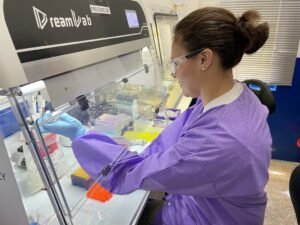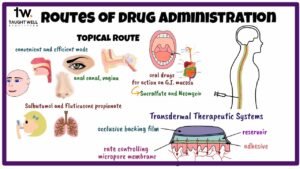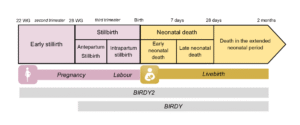Physical Therapy After an Elbow Fracture
Understanding Elbow Fracture Recovery Through Physical Therapy
An elbow fracture can significantly impact your daily life, limiting arm movement and strength. Physical therapy plays a pivotal role in the recovery process, helping to restore mobility, rebuild strength, and prevent long-term complications. This guide explores the importance of physical therapy after an elbow fracture, the types of exercises involved, and what to expect during rehabilitation.
Why Physical Therapy Is Essential After an Elbow Fracture
The elbow is a complex joint where the humerus (upper arm bone) connects with the radius and ulna (forearm bones). The olecranon, the bony tip of the ulna, is particularly vulnerable to injury. Fractures often result from trauma, such as a fall, car accident, or sports injury, and may involve the radial head, distal humerus, or olecranon. In severe cases, fractures can be accompanied by dislocations or involve compound breaks, leading to prolonged pain and stiffness.
Physical therapy is critical to counteract the stiffness and weakness that often follow an elbow fracture. Without intervention, immobilization in a cast or sling can cause joint rigidity and muscle atrophy, making everyday tasks challenging. Early physical therapy helps maintain joint flexibility and promotes faster healing.
What Happens After an Elbow Fracture
Following an elbow fracture, your healthcare provider will realign the broken bones to ensure proper healing. For minor fractures, a brace or sling may suffice. However, severe fractures may require surgical intervention, such as open reduction internal fixation (ORIF), where screws, plates, or wires stabilize the bones. Prolonged immobilization, while necessary, can lead to stiffness, making physical therapy a vital part of recovery.
Goals of Physical Therapy for Elbow Fractures
Physical therapy after an elbow fracture focuses on three primary objectives:
- Restoring Range of Motion (ROM): Regaining the ability to bend, straighten, and rotate the arm fully.
- Rebuilding Strength: Strengthening the muscles around the elbow, shoulder, wrist, and hand to restore functionality.
- Managing Pain and Swelling: Reducing discomfort and inflammation to support healing.
A physical therapist will design a personalized plan to help you return to normal activities while minimizing the risk of long-term complications.
Types of Physical Therapy Exercises for Elbow Recovery
Physical therapy involves a combination of exercises and techniques tailored to your injury and recovery stage. Below are the main categories of exercises you can expect.
Range of Motion (ROM) Exercises
Restoring full ROM is a top priority, as elbow fractures often lead to stiffness that can persist even after the bones heal. Early ROM exercises yield better outcomes, with studies showing that patients who start therapy soon after immobilization require less treatment time.
Common ROM exercises include:
- Elbow Flexion: Gently bending the elbow as far as comfortable to improve flexibility.
- Elbow Extension: Straightening the arm to regain full extension.
- Forearm Supination: Rotating the forearm so the palm faces upward.
- Forearm Pronation: Turning the forearm so the palm faces downward.
For severe ROM limitations, a dynamic splint may be used. This spring-loaded device applies gentle pressure to stretch the elbow joint, enhancing mobility during the day.
Strength-Building Exercises
An elbow fracture can weaken the muscles surrounding the joint, especially if a sling restricts movement. Strength exercises help rebuild muscle mass and restore grip strength, which is crucial for daily tasks.
Examples of strength exercises include:
- Grip Strengthening: Squeezing a stress ball to improve hand and forearm strength.
- Isometric Dumbbell Holds: Holding a dumbbell without moving to engage forearm muscles.
- Resistance Band Curls: Using a resistance band to perform controlled bicep curls.
- Weighted Forearm Rotations: Rotating the forearm with a light dumbbell to strengthen pronation and supination muscles.
Your therapist will gradually increase the intensity of these exercises based on your progress.
Pain and Swelling Management
Post-fracture swelling and discomfort can hinder recovery. Physical therapists use techniques like ice therapy or electrical stimulation (e-stim) to reduce inflammation. Over-the-counter medications, such as ibuprofen or naproxen, may also be recommended. In some cases, shortwave diathermy—a technique that uses electromagnetic waves to generate deep heat—can improve joint mobility and alleviate pain.
Scar Tissue Management
If you underwent ORIF, scar tissue may form around the surgical site, restricting movement. Your therapist may perform scar tissue massage or teach you self-massage techniques to improve tissue flexibility. Kinesiology tape is another tool that can stretch scar tissue and support the healing process.
What to Expect During Recovery
Recovery timelines vary depending on the fracture’s severity and the individual’s overall health. Most people can resume normal activities within four months, though full healing may take up to a year. Mild mobility limitations are common even after recovery, underscoring the importance of consistent therapy.
Your physical therapist will guide you through progressive exercises, ensuring proper form and fit for any braces or slings. They’ll also monitor your progress and adjust your plan to prevent re-injury.
Tips for a Successful Recovery
- Start Early: Begin physical therapy as soon as your doctor approves to minimize stiffness.
- Stay Consistent: Follow your therapist’s exercise plan diligently, even when progress feels slow.
- Communicate: Report any pain or discomfort to your therapist to adjust your treatment.
- Be Patient: Healing takes time, but steady effort will yield significant improvements.
Conclusion
Physical therapy is a cornerstone of recovery after an elbow fracture, helping to restore movement, strength, and function while preventing complications like stiffness or muscle loss. By working closely with a physical therapist and committing to a tailored exercise program, you can regain full use of your elbow and return to your daily routine with confidence.
Optimized Heading Structure Summary
- H2: Understanding Elbow Fracture Recovery Through Physical Therapy
- Sets the stage for the article and introduces
💡 Frequently Asked Questions
⭐ Expert Tips
- Include seasonal or trendy variations to keep your meals exciting.
- Highlight prep shortcuts or time-saving techniques for busy cooks.
- Consider dietary restrictions and include substitution suggestions.
✅ Key Takeaways
- These dinner ideas are perfect for impressing guests or enjoying special occasions.
- Choose recipes that match your skill level and available kitchen tools.
- Presentation and taste both contribute to a memorable dining experience.
📣 Join Our Community
Want more inspiration like this? Subscribe to our newsletter for weekly dinner ideas and cooking tips!











